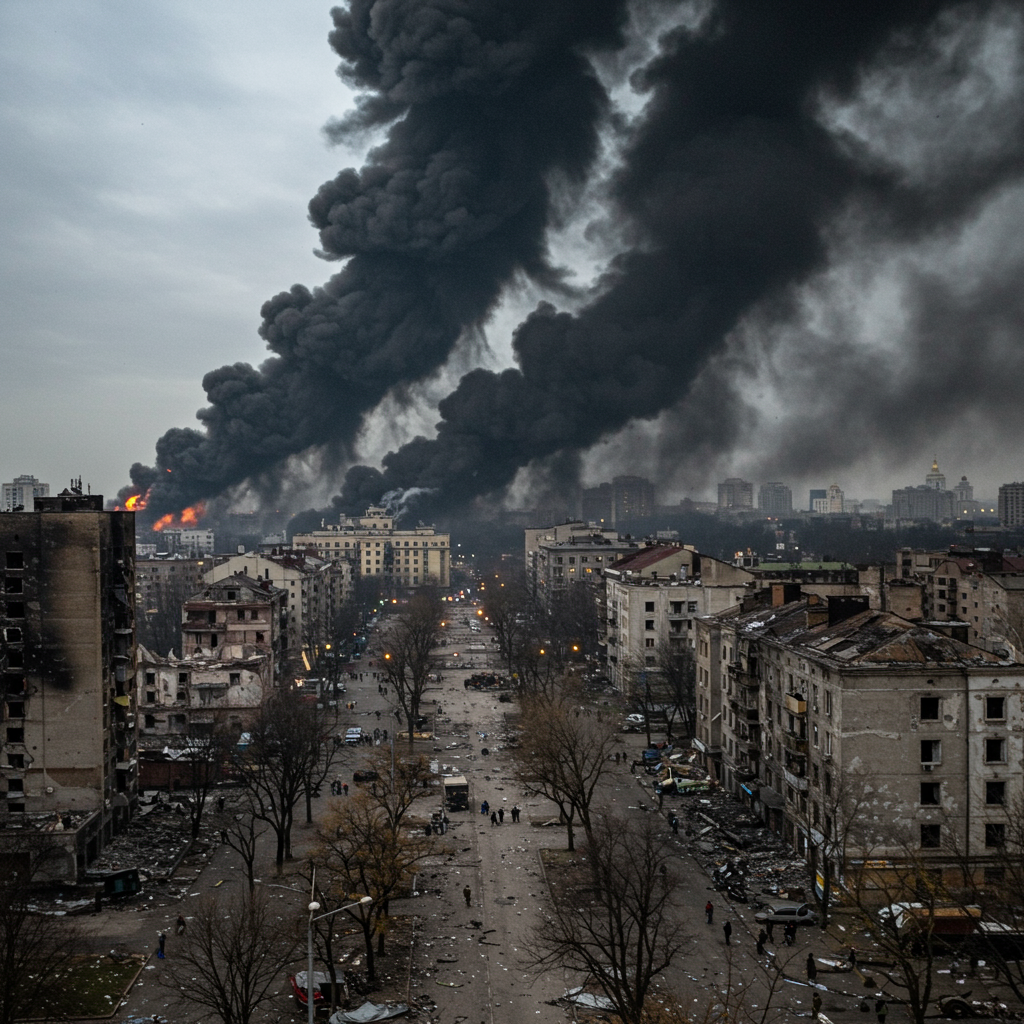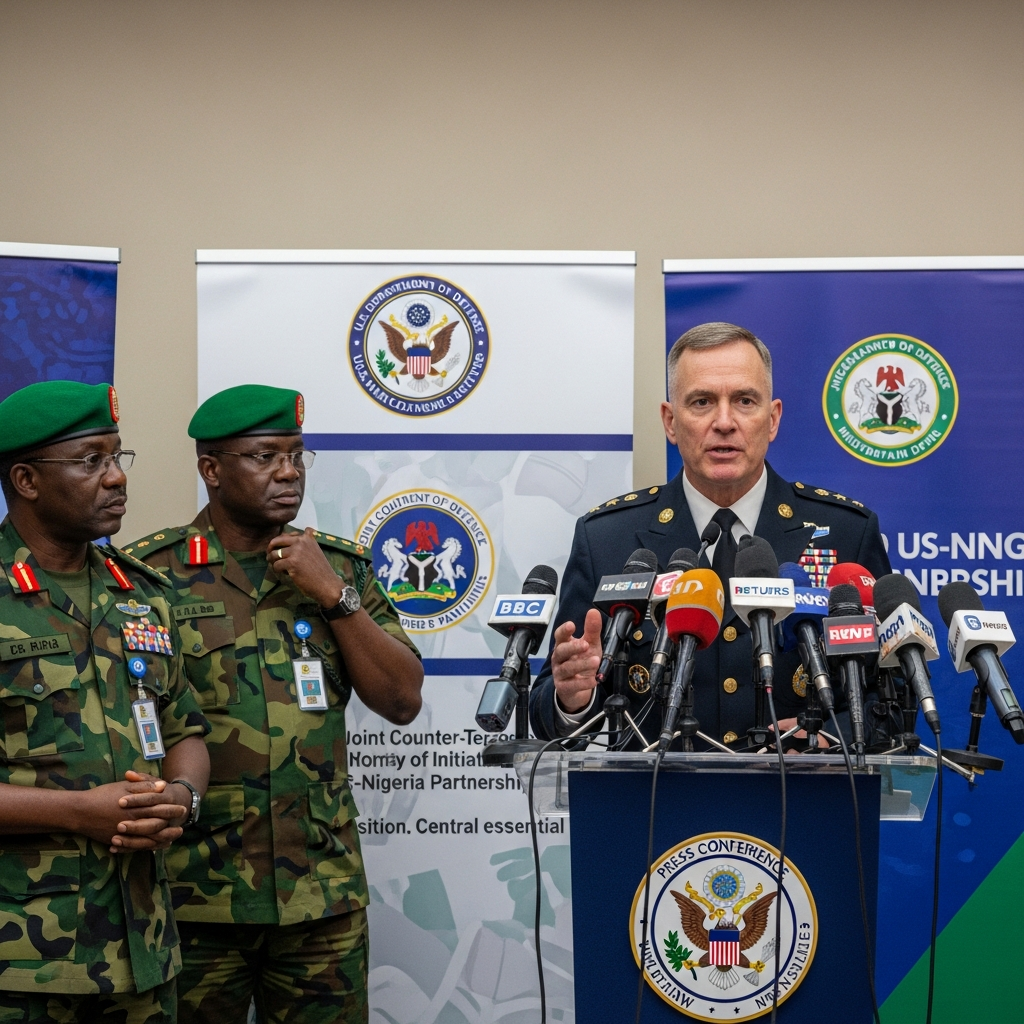Heavy smoke billowed over central Kyiv following Russia’s most significant aerial assault since the full-scale invasion began. The intense bombardment, occurring shortly after diplomatic calls involving U.S. President Donald Trump and Russian President Vladimir Putin, highlights the ongoing, brutal nature of the conflict. This latest attack underscores Russia’s apparent lack of willingness to halt hostilities, even amidst high-level international discussions aimed at finding a resolution.
Russia Unleashes Record-Breaking Assault on Kyiv
ukraine’s air force reported an unprecedented aerial barrage across the country. The attack involved a staggering 539 drones and 11 missiles. Officials specifically noted that the “main direction of the strike” targeted the Ukrainian capital, Kyiv. This scale of attack surpassed the previous record set just days prior, indicating an intensification of Russia’s air campaign tactics. The bombardment resulted in immediate casualties and widespread destruction across Kyiv and other regions.
The sheer number of incoming drones is part of a strategic shift. Ukrainian officials suggest Russia is increasingly using drones to overwhelm air defense systems. By launching hundreds of targets simultaneously, they seek to exhaust interceptor missile supplies and capabilities. This tactic is becoming more prevalent and is causing greater damage across Ukrainian cities. Earlier data from June alone showed Russia launching thousands of drones and missiles, underscoring the consistent pressure on Ukraine’s air defenses.
Damage reports quickly emerged from multiple districts in Kyiv. Tymur Tkachenko, head of the Kyiv City Military Administration, confirmed that six districts were hit. Affected areas included residential neighborhoods, educational institutions, and essential infrastructure. More than 30 apartment buildings and five schools suffered damage. Numerous private homes were also impacted. Emergency services battled fires ignited by falling debris across at least two districts. Interior Minister Ihor Klymenko shared grim photos of the devastation. He described it as another “night of terror,” targeting civilians and civilian objects.
The human toll included at least one fatality confirmed in Kyiv so far. Rescue teams recovered one body from the rubble of damaged structures. Additionally, city officials and emergency services reported over two dozen injuries across the capital. The attacks extended beyond Kyiv, with at least six people injured in the city of Kryvyi Rih. Infrastructure damage wasn’t limited to buildings; railway lines near Kyiv were also struck. This caused significant disruption, including a two-hour delay and rerouting for passenger trains heading west. The scale and scope of the damage demonstrate the indiscriminate nature of the assault.
International Buildings Among Those Damaged
The widespread impact of the attack also extended to diplomatic properties. The building housing the Polish Consulate in Kyiv sustained damage. Polish Foreign Minister Radoslaw Sikorski confirmed the damage but thankfully reported no injuries at the site. Further south, in Odesa, the building of the Chinese Consulate General also suffered minor damage from Russian strikes on that city. These incidents highlight the broad risk posed by the attacks, even to foreign missions.
Timing Aligns With High-Level Diplomatic Activity
The timing of the massive assault drew immediate attention and condemnation. Ukrainian President Volodymyr zelenskyy pointed out the direct correlation between the air raid alerts and the widely reported phone call between U.S. President Trump and Russian President Putin. Writing on social media, Zelenskyy noted, “The first air raid alerts in our cities and regions yesterday began to blare shortly after Trump spoke to Putin by telephone.” He characterized the night as “brutal” and “sleepless.” Ukraine’s Foreign Minister Andrii Sybiha echoed this sentiment, calling it an “absolutely horrible and sleepless night.” Sybiha explicitly linked the attack to the Trump-Putin call, stating, “Putin clearly shows his complete disregard for the United States and everyone who has called for an end to the war.” This suggests Ukraine views the attack as a cynical message from Moscow accompanying the diplomatic engagement.
Trump-Putin Call Yields No Progress on Ceasefire
The call between President Trump and President Putin took place just hours before the main assault. Following the hour-long conversation regarding the war, President Trump expressed disappointment. He told reporters he made “no progress” towards ending the conflict. Trump stated he did not believe the Russian leader was ready for a ceasefire or an end to the war. “I don’t think he’s looking to stop,” Trump commented. The Kremlin’s account, provided by foreign affairs adviser Yuri Ushakov, indicated Putin told Trump Russia would continue the conflict. Putin reiterated that hostilities would persist until Moscow addressed what it termed the “root causes” of the war. While Ushakov didn’t detail these, Putin’s prior statements have included demands that Ukraine cede territory and abandon aspirations to join military alliances like NATO. Russia’s Ministry of Defense, in its standard response, claimed the aerial assault only struck military targets, a claim often disputed by evidence on the ground.
Zelenskyy Discusses Air Defense Needs With Trump
Shortly after the bombardment of Kyiv, President Zelenskyy spoke with President Trump by phone. This call had reportedly been planned before the latest attacks. Zelenskyy described the conversation as “very important and useful.” Discussions focused on the recent Russian strikes and, crucially, the critical need to bolster Ukraine’s air defense capabilities. Zelenskyy stated they discussed “increasing the protection of the sky” over Ukraine. The two leaders also agreed to work together to strengthen Ukraine’s aerial protection. Beyond immediate defense, they discussed opportunities for joint weapons production. Zelenskyy highlighted Ukraine’s readiness for direct cooperation with the U.S. on drone technology and related projects, deeming it “extremely necessary for security.” Zelenskyy also noted Trump was “very informed” about the situation in Ukraine. The presidents agreed to arrange a separate meeting between their respective teams to delve further into defense cooperation.
Context: US Weapons Policy and European Response
The intense Russian assault and the subsequent high-level calls occurred at a sensitive time regarding U.S. support for Ukraine. Earlier in the week, the United States announced it was reviewing its weapons stockpiles. As a result, the administration paused deliveries of several key weapons systems to Ukraine. These systems, including air defense assets like Patriot missiles and other ammunition, had been promised by the previous administration. Kyiv viewed this pause with concern, warning it could hinder their ability to defend against Russia’s escalating air campaign and advances on the front lines. Trump has previously commented on U.S. weapon stocks, suggesting the U.S. needs to ensure its own readiness. The Pentagon confirmed pausing a shipment already in Poland for review.
This U.S. policy shift has placed a greater emphasis on European allies to step up their support. NATO chief Mark Rutte acknowledged Washington’s need to maintain its stocks. However, he expressed hope for “a level of flexibility” to ensure Ukraine receives necessary supplies. Rutte noted the burden of backing Ukraine was already shifting towards European nations. Kyiv’s main European backers are actively seeking ways to mobilize weapons and financial aid. They aim to adapt to a U.S. administration perceived as less interested in providing military hardware. However, European nations face their own shortages and capability gaps, particularly concerning advanced air defense systems like the U.S.-made Patriot. German government spokesman Stefan Kornelius confirmed Berlin was holding “intensive discussions” on filling the gap left by the U.S. pause, including potential procurement of Patriot systems for Ukraine. Global supply issues also reportedly contribute to slow Patriot production compared to demand.
The large-scale Friday attack and its timing serve as a stark reminder of the ongoing violence and strategic implications of the conflict. Zelenskyy called for additional sanctions on Russia “without delay.” He reiterated demands for Ukraine to be provided with “all necessary means to defend itself.” The sustained, record-breaking air assaults underscore the urgent need for advanced air defense and continued international support for Ukraine’s survival.
Frequently Asked Questions
What was the scale and impact of this particular Russian attack on Kyiv?
Russia launched its largest aerial assault on Ukraine since the full-scale war began, using 539 drones and 11 missiles, primarily targeting Kyiv. The attack caused significant damage across six districts, hitting residential buildings, schools, and infrastructure. It resulted in at least one death and over two dozen injuries in the capital, highlighting the attack’s brutal impact on civilians and civilian sites.
How is the US role in providing weapons to Ukraine changing amidst these attacks?
The U.S. recently paused deliveries of some critical weapons, including air defense systems, while reviewing its own stockpiles. This action is causing concern in Kyiv and Europe, potentially hindering Ukraine’s defense capabilities against escalating Russian strikes. In their call after the attack, Trump and Zelenskyy discussed strengthening Ukraine’s air defenses and exploring joint weapons production opportunities, suggesting potential paths for future cooperation despite the current pause.
What is the significance of the timing of the Russian attack relative to US diplomatic calls?
Ukrainian officials, including President Zelenskyy and Foreign Minister Sybiha, noted that the attack occurred shortly after President Trump’s call with President Putin. They viewed this timing as a deliberate and cynical message from Moscow, indicating Russia’s continued intention to pursue the war through force despite diplomatic efforts. This timing has intensified calls for increased international pressure and support for Ukraine.



